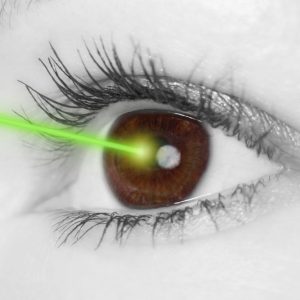Understanding Flap Complications: Problems After LASIK Surgery
June 2, 2016Why Dry Eye Occurs After LASIK Surgery
September 2, 2016At Laser Vision Correction Center of New Jersey, we have helped thousands of patients achieve visual independence through LASIK surgery over the years. By integrating the latest, most advanced technologies and techniques into our practice as they become available, we have been able to provide our patients with laser vision correction results of the highest standard. While LASIK has always been one of the safest and most reliable forms of elective surgery in medicine, it has become even more so in recent years with the advent of wavefront mapping technology, which our eye care experts use to produce truly customized results for our LASIK patients.
Prior to the introduction of wavefront mapping into laser vision correction surgery, LASIK patients were able to achieve improvements in their vision similar to those possible with traditional eyeglasses and contact lenses. In other words, LASIK could correct myopia (nearsightedness) and, to an extent, hyperopia (farsightedness), with or without astigmatism. However, despite claims of “perfect vision” made by less scrupulous LASIK providers, experienced eye surgeons knew better. The chief benefit of LASIK is that the vast majority patients would be able to rely less on their glasses and contact lenses, and most would be able to perform their day-to-day activities without those visual aids at all. And that was a pretty big benefit. However, like glasses and contacts, LASIK could not correct higher order aberrations.
Wait – higher order aberrations? What are those? Those are the visual errors that fall outside of the common errors that conventional LASIK, eyeglasses, and contact lenses could correct, namely myopia, hyperopia, and astigmatism. They are caused by tiny, microscopic imperfections in the shape of the cornea that are unique to each individual eye. These imperfections are so small, in fact, that until wavefront mapping technology came along they couldn’t be measured at all. They are also the reason that even a person with 20/20 vision or better might still not see all that “perfectly.”
Ultimately, understanding the difference between higher vs. lower order aberrations at our West Orange, NJ laser vision correction center is essential to understanding the difference between conventional LASIK and custom LASIK – and why the latter is vastly preferable to the former.
What Are the Differences between Lower and Higher Order Aberrations?
Refractive errors result from irregularities in the shape of the cornea, which would ideally be perfectly smooth and precisely curved. Of course, no cornea is perfect. Some corneas are close enough that they do not require vision correction, however, while others are flawed to the extent that they need correction to various degrees.
Imperfections in the shape of the cornea are classified by how common they are. The imperfections that are easily measured, specifically myopia and hyperopia, with or without astigmatism, are categorized as lower order aberrations. These refractive errors are relatively simple to treat, assuming that there is no underlying eye condition that complicates matters.
Conversely, higher order aberrations are simple neither to measure nor treat. Indeed, without wavefront technology, they are impossible to detect. Unlike lower order aberrations, which cause vision to be less clear, higher order aberrations affect the quality of a person’s vision, making it less sharp and vivid than it would otherwise be.
Learn More about Higher Order Aberrations vs. Lower Order Aberrations
To learn more about higher order aberrations and lower order aberrations, please contact Laser Vision Correction Center of New Jersey today.



